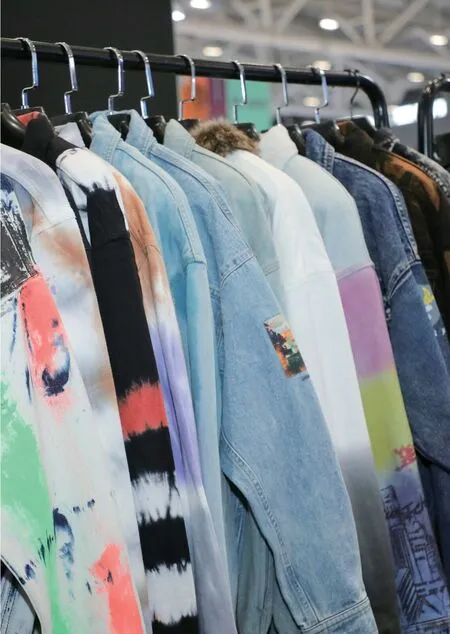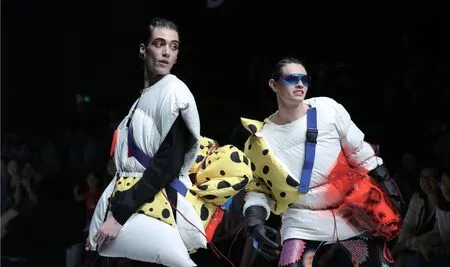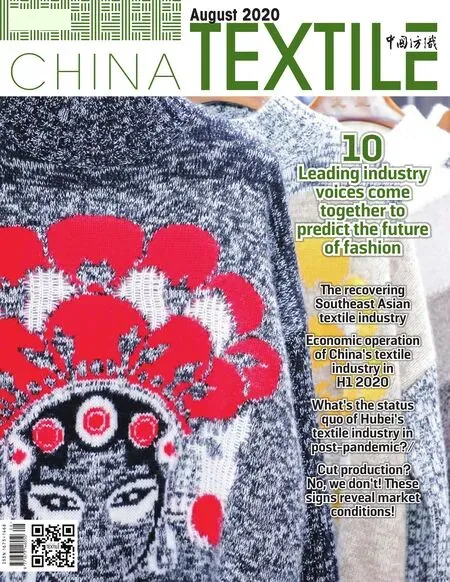10 Leading industry voices come together to predict the future of fashion
By Zhong Mengxia

Te sudden outbreak has not only changed people's daily life, but also affected the pace of world development.The COVID-19 pandemic has transformed the global economy and consumers’ behavior, and the fashion industry, as one of the international industries, is facing an increasingly complex situation.
According to the fashion industry report released by Business of Fashion and McKinsey & Company, sales in the fashion industry will fall by 27% to 30% in 2020 due to the pandemic.
Smoothly weathering through this period may not be easy for the fashion industry, and reducing inventory and cut costs are most important things for businesses in 2020.
About the future of fashion, the voices and thinking of the industry have never stopped. In July, with the theme of "Te Future of Fashion", Intertek Maison brought many influential media and critics in the global fashion and textile industry together, covering 10 countries including Brazil, China, France, Germany, India, Italy,Japan, Russia, Netherlands, UK and the United States(arranged in alphabetical order). Among them, China Textile, a sole foreign language media in domestic textile and fashion industry, was one of them to jointly predict and discuss the future development trends of the fashion industry in the post-pandemic era.

What awaits the fashion industry in post-pandemic era was clearly discussed, David Shah, Publisher and CEO at Metropolitan Publishing BV, who organized and planned for this event, said that the future of fashion may involves 10 key points below.
◎Greater collaboration, alliances, mergers and acquisitions among brands.
◎Digitization will accelerate and the wholesale system will decline.
◎Te Chinese luxury market will bounce back first to account for as much as 50% of the whole industry.
◎Local business could be the new black, while city centre business models reliant on maximum footfall are at odds with social distancing.
◎Longevity, investment potential and heritage factors will count evermore in consumer decision making.
◎Te concept of fashion shows will be completely overhauled.
◎Digital will become a key component in sales and fashion presentations as buyers travel less.
◎Resale, rental and transparently sustainable business will grow.
◎Athleisure and loungewear are far from over –especially as working from home will become the norm for some sectors.
◎Te shift to more restrained, timeless pieces will ultimately give way to exuberance and excess – just as wartime fabric rationing paved the way for Dior’s New Look collection in 1947.
Obviously, the pandemic impacted the development of fashion industry, but did not impair the fashion insiders’ confidence in combating the COVID-19 with both resolutions and solutions. A large number of domestic and foreign brands acted quickly to change with the time as people’s living habits, on account of quarantining at home,morphed into a new wave of consumption online instead of strolling streets lined with window-shop fashions and they collaborated with celebrities to sell their products in the live-streamings, which were recorded the hottest in March,during the pandemic. Globally, short videos have taken the world by storm, and Tik Tok has become one of the most popular mobile applications in the world in 2020.
Time is silent but never stops, and has already clicked to the end of the first half in 2020. We all see that the pandemic affects every aspect of our lives not only in the past few months or today, but also tomorrow, most likely in the fashion consumption. Additionally, the pandemic has clearly accelerated trends that were emerging,and the ever-accelerating digital development and the people’s transformed buying habits will offer an opportunity for industry insiders to rethink the future of the garment industry.
- China Textile的其它文章
- Dear readers:
- The rise of live streaming, the boom of e-commerce
- Vietnam market demand will resume, but the whole year exports may fall
- The decline in output of the chemical fiber industry continues to narrow
- Responsibility and changes in the textile digital printing industry
- Cut production?No, we don’t! These signs reveal market conditions!

